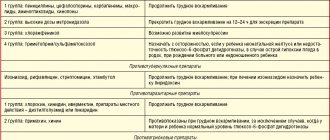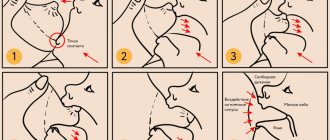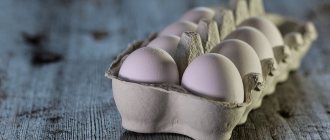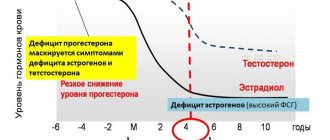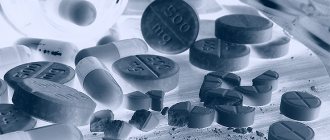Postpartum diet - is it necessary?
Experts have different opinions, but most recommend sticking to a diet in the first months, because after birth, new processes begin and are set up in the baby’s body, and to support them you need a base of nutrients, vitamins and microelements. The only source of all this for the child’s body is mother’s milk.
.
Absolutely everything a woman consumes is absorbed into the milk formula. Therefore, it can be both a high-quality springboard for the development of a child and an irritant. In order for all organs and systems to develop well, milk must be of the highest quality.
Proper nutrition during pregnancy helps you quickly get rid of extra pounds without causing harm to the body.
In addition to the direct effect on the lactation product, proper nutrition helps the mother restore her own vital processes and recover from stress.
After childbirth, the body is weakened because it has suffered a great hormonal and physical shock, and to maintain its functioning, the strength that a woman receives from food is needed.
In case of malnutrition or poor nutrition, insufficient fluid intake, the body is depleted and physically cannot function normally. The health and appearance of the young mother deteriorates.
What not to drink during lactation
The first and main prohibition is alcohol in any form. Due to the content of toxic substances, the consumption of alcoholic and low-alcohol drinks by a nursing mother causes significant harm to the baby's health.
Opinions regarding coffee vary. Some doctors insist on giving it up, others allow the possibility of using it in small quantities. In the latter case, it should be a fresh drink, brewed from freshly ground high-quality grains.
Whole milk can cause gas and colic in a newborn baby, so it should be avoided. Carbonated drinks, lemonades, and tonics are highly likely to cause an allergic skin reaction.
Basic principles of nutrition after childbirth
The postpartum diet is not aimed at losing weight; it should not be too tough and debilitating. It is best to contact a specialist to draw up a nutrition plan, because the diet must be selected individually
for each mother and based on the state of the immune system, microflora and the presence of any allergies.
All mono-diets
, food should be
varied
. When following a diet, every mother should adhere to several principles.
No need to eat for two
This is the most common mistake among young mothers. In this situation, the decisive factor is quality, not quantity; the new mother does not need to eat twice as much. Even in a normal, non-pregnant state, overeating is fraught with poor health and severe stress on the digestive system.
Milk should not be “empty”, but also not oversaturated, because this will put a strain on the child’s gastrointestinal tract, and some foods consumed in large quantities can cause allergies, colic and bloating in the baby.
Food diary
To systematize food intake and track the baby’s reaction to certain foods, it is recommended that every mother keep a food diary. It needs to be maintained regularly and all foods introduced into the diet must be included. Its pages look like this:
| Product introduction date | The product's name | Child's chair | Skin | General condition of the baby |
| The new product is tried in the first half of the day in small quantities. After two days, the child’s reaction is monitored. | Everything unusual is noted: the presence of greenness and yellowness, consistency, sliminess, color and multiplicity. | Presence of rash, irritation. | Moodiness, sleep state, temperature, gastrointestinal tract function (colic, bloating, diarrhea, vomiting). |
Products should be introduced gradually and all changes in the child’s well-being should be recorded in a diary. If there are people in the family who suffer from allergies or the mother herself is allergic, you need to use new products with extreme caution.
Templates for food diaries can be found on the Internet or drawn out in a notebook yourself.
Stop products
The list of products that a woman consumes during lactation may vary depending on the age of the child and the duration of breastfeeding. But doctors recommend removing some foods from the diet for the entire period of breastfeeding. Doctors give a list of them upon discharge; the list of prohibited ones almost always includes:
- canned meat, dairy and fish;
- pickles (store-bought and homemade);
- ketchup and mayonnaise;
- vegetable marinades;
- semi-finished products;
- whole cow's milk;
- hot and spicy sauces, soy sauce is possible;
- legumes (can only be used in very small quantities, as they are a gas-forming product and may cause the child to swell);
- strong coffee (it’s better to remove it altogether) and tea;
- packaged juices;
- alcohol;
- nuts;
- grape;
- White cabbage;
- chocolate;
- processed cheeses and blue cheese;
- sausage products.
Dishes containing these products can cause bloating and colic in your baby. Mother's milk, which contains impurities and elements of these foods, has an irritating effect on the baby's unadapted stomach. So that the child does not become capricious and sleep peacefully, it is better not to eat this food.
[media=
https://youtu.be/HXTLJMnKU1c
]
Is it possible to eat cucumbers, cabbage, and tomatoes while breastfeeding?
Most women are of this opinion: you should give up cucumbers, white cabbage and zucchini, as they are provocateurs of flatulence, and therefore contribute to increased colic in the baby. The explanation is simple: they weaken you because they contain a lot of fiber. Is it really?
- Cucumbers. They are the unreasonably priority vegetables that top the list of foods prohibited during lactation. “Knowledgeable” mothers say that all you have to do is eat a cucumber, and your baby will get green, foamy stools. However, for some reason they forget that such a weakening can happen due to the fact that the child simply does not receive enough fatty hind milk and early fore milk predominates in his diet. In addition, there are a number of studies indicating that digestive disorders in a baby are most often associated with intolerance to the protein contained in formulas and breast milk. Therefore, a nursing mother can eat those vegetables that she was used to consuming before pregnancy. Especially after the first 3 months.
- Cabbage. Why is it necessary to give up such a healthy and tasty vegetable while breastfeeding? If cabbage causes increased gas formation in mother and child, just add cumin to it and the negative effect will disappear on its own. Moreover, sauerkraut is so necessary in winter, because it is a champion in vitamin C content. In addition, white cabbage contains folic acid and a lot of other useful microelements. Therefore, you should discard scientifically unfounded prejudices and include this healthy vegetable in your daily diet.
- Tomatoes. Young mothers refuse them because of the same rich red color, fearing to provoke allergies in the baby. While lycopene, which gives tomatoes their color, is a powerful antioxidant. Both the woman herself and her baby need it. Just one glass of tomato juice can replenish up to half the daily requirement of vitamin C. But you should not drink it on an empty stomach. However, women who are breastfeeding should not consume tomatoes with nitrates. In order not to buy a dangerous vegetable, it is important to know some rules.
You should not buy thick-skinned tomatoes with obvious white veins that are visible on the cut. If you press a vegetable with your finger and a dent remains on it, if you hit it on the floor or wall and it bounces off and does not change shape, then this means only one thing - the tomato is rich not in useful substances, but in chemicals. It is better to avoid using it.
First postpartum trimester
It is during this period that nutrition should be monitored especially carefully. It is important not to irritate the child’s body, which is not yet accustomed to anything. Each nutrition plan is compiled according to the universal recommendations of doctors, but taking into account the individual needs of the mother. The diet for a nursing mother in the first days may consist of:
:
- yesterday's or dried bread;
- buckwheat, boiled in water and seasoned with vegetable oil;
- stewed or boiled beef.
Be sure to follow the drinking regime and consume at least 2 liters of liquid per day during the entire feeding period. This is important for lactation and the general well-being of the mother. On the third and fourth days you can expand the menu and add:
- baked fruits;
- steamed or baked vegetables (zucchini, cauliflower, carrots, pumpkin, potatoes) light salads;
- dairy products;
- drinks made from dried fruits (dried apricots, prunes);
- vegetable broths;
- whole grain porridge.
Now the mother can relax more. After a week, you can gradually start eating:
- boiled lean fish;
- low-fat and low-concentrated meat broths;
- green fresh apples;
In the third week, mom can still diversify her diet. The child’s enzymatic system is almost established, as is the intestinal microflora. A woman is allowed:
- chicken eggs (do not overuse proteins, they can cause allergies in the baby);
- fruit drinks;
- porridges, cereals in soups;
- dry cookies and biscuits;
- beets, broccoli and boiled cauliflower.
There should be 5 meals a day (breakfast, light snack, lunch, snack, dinner). Portions should be small (so that the contents of the plate fit on two palms). It is important to avoid feelings of extreme hunger and thirst; you need to eat every 3-4 hours.
Menu for a nursing mother in the first week - table
Delicious and healthy menu for the first week:
| Breakfast | Dinner | Afternoon snack | Dinner | |
| Monday | Wheat porridge with the addition of pears. Cottage cheese and beetroot pudding | Zucchini soup. Chicken fillet rolls | Creamy soufflé | Ratatouille |
| Tuesday | Carrot casserole. Barley porridge with a spoon of sour cream | Mashed potato and vegetable soup. Stuffed zucchini | baked apple | Fish in cheese sauce |
| Wednesday | Oatmeal with cheese and dates. Pumpkin casserole | Pumpkin puree soup. Steamed fish cutlets with cauliflower | Omelette | Steamed chicken cutlet with vegetable stew; |
| Thursday | Buckwheat porridge. Carrot and zucchini mousse | Chicken bouillon. White fish soufflé with buckwheat | Syrniki | Fish stewed in sour cream |
| Friday | Pumpkin plant. Apple and pear puree | Buckwheat soup. Baked Brussels sprouts with veal | Rice pudding | Rice and chicken soufflé |
| Saturday | Hercules with apples. Slice of hard cheese | Chicken soup with homemade noodles. Flounder with zucchini | Yogurt with banana | Rabbit stewed in kefir |
| Sunday | Liquid rice porridge. Apple and cottage cheese casserole | Ear. Turkey Stuffed Green Peppers | Homemade ice cream | Flounder stewed with potatoes |
Second postpartum trimester
During this period, you can expand your food intake, but nutrition should still be correct and balanced. While at 3-6 months of breastfeeding, the mother is allowed to:
- seasonal vegetables and fruits in raw form;
- lean borscht seasoned with tomato juice or pasteurized tomatoes;
- nuts (except pistachios and peanuts);
- rabbit meat;
- homemade cherry and apple jam;
- lingonberry, cherry and currant fruit drinks;
- honey in small quantities;
- freshly squeezed juices from pumpkin, carrots, beets, apples;
- fresh onions;
- fresh and dried spices: basil, lemon balm, thyme, tarragon, celery, oregano.
Stop foods are still not allowed! If your child has a rash or gastrointestinal disorders, contact your pediatrician and take a food diary.
From 6 months to a year
The list of permitted foods remains relevant, but now a young mother can sometimes treat herself to delicious fried, but not fatty foods; steamed and boiled foods should prevail.
Smokers should definitely give up the habit while breastfeeding.
You can also now try (not eat regularly) garlic, seafood, legumes and dark dark chocolate; it is best to eat these foods in the morning.
Strictly prohibited products remain: condensed milk, sweet soda, mayonnaise and ketchup, margarine, refined sugar, fast food, pickles and smoked foods, ice cream, baked goods and baked goods with fillings, semolina, sausages and canned food.
Diet for breastfeeding women after caesarean section
After surgery, the body requires support for intensive recovery. On the first day after surgery, it is necessary to monitor not only the reproductive and genitourinary systems, but also the functioning of the digestive tract. Doctors give recommendations on nutrition and drinking regime for each woman in labor.
Taking into account the peculiarities in the development of lactation, the menu is compiled not only from products that are safe for mother and child, but also those that stimulate the production of milk:
- fermented milk products - yoghurts, fermented baked milk and kefir (preferably bio-kefir) can be consumed half a liter per day, make casseroles;
- lean meat (poultry and beef) strictly steamed or boiled (can be boiled in pieces or made into cutlets), fried is not allowed;
- cottage cheese with a low fat content;
- fruits and vegetables except those that stimulate increased gas formation;
- butter and vegetable oils in small doses.
It is important to prevent hunger and thirst in order to avoid exhaustion of an already weakened body. The food should be varied; following the doctor’s recommendations, you can add other foods.
On the first day after cesarean section, all solid food is excluded.
It is allowed to drink non-carbonated mineral water, juice or compote without sugar. Main nutrition occurs intravenously
. After a few days, the menu expands and the consumption of cereals, broths and boiled chicken is allowed.
Drinking regime during lactation
According to medical recommendations, on the day of birth you need to drink about 3 liters of water to stimulate milk flow.
Starting from the third day, the amount should be reduced to 1-1.5 liters. The diet should include:
- boiled or filtered water;
- weak tea with a drop of milk;
- herbal decoctions for lactation with the addition of cumin, dill, anise, fennel;
- compotes based on green apples, pears or dried fruits.
A number of sources contain recommendations for drinking herbal teas with the addition of honey. The last component can provoke serious allergies, so this advice should be taken with caution, monitoring the baby's skin reactions.
